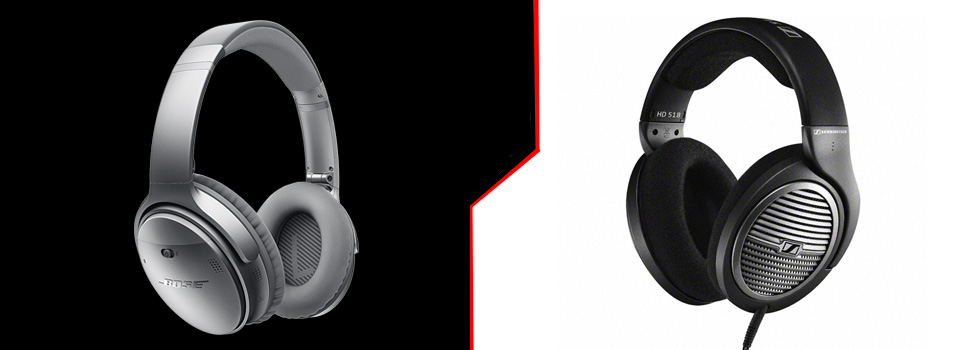Open Back vs Closed Back Headphones
Are you trying to decide between open back and closed back headphones, but have no idea which one best matches your preferences? It’s important to understand what each format brings to the table and the differences between them. There are huge differences in the type of audio you can expect, comfort, and other features.
In this article we delve deep into the defining characteristics of each format and the type of buyers that would benefit the most from each one. By the end of this article you should have a good idea if you need open back or closed back headphones for your requirements.
Keep in mind that both types of headphones have an over-ear format, which means they are designed to fit the entire ear inside the earcup. This is different than the on-ear design where the earpad is simply pressed against the ear.
What are open back headphones?
The open back design allows air to freely move in and out of the earcups. This has a number of advantages and disadvantages – it’s up to you to figure out if the pros outweigh the cons.
Here are the advantages of open back headphones:
- Wide soundstage: a soundstage gives you the feeling that the audio is occurring all around you. Furthermore, the effect introduces the feeling of depth, which means you’ll feel as if sounds are taking place not only close by, but also at a distance. The open back design does a great job of creating a wide soundstage, which has a lot of depth.
- Ventilation of air and moisture: since air can move freely in and out of the headphones the build-up of sweat and moisture is minimized. The flowing air can dissipate heat and moisture, which means your ears are kept cool. This enables you to enjoy long lasting sessions, but this advantage is based on your climate.
- Suitable for professionals: the open sound provides a more realistic audio experience, which is ideal for professionals. The evenness across the frequency spectrum means professionals can record audio with a superb end result.
However, there are some disadvantages of the open back design that might be a deal breaker for you:
- Sound leakage: using open back headphones around others may cause them to be frustrated with you. That’s because there will be a considerable amount of sound leakage that could disrupt others from their work. However, this isn’t really an issue if you’re planning to use the headphones in an isolated environment.
- Fragile: it can be argued that the open back design is more fragile because moisture can creep into the earcups more readily. Therefore, you need to be careful with these types of headphones to ensure longevity.
- Lack of noise isolation: there is a minimal amount of noise isolation with the open back design, which means using them in a noisy environment is not ideal. They are not ideal if you live alongside a busy street or plan to use them in an office environment.
What are closed back headphones?
The closed back design has earcups that essentially “trap” the air within the earcups and this has a number of important effects on the quality of the audio. You should consider both the pros and cons of this headphone format to determine if they have the features to match your requirements.
Here are the advantages of closed back headphones:
- Noise isolation: the earcups are designed to keep noise out, which means you can enjoy your personal audio experience in a noisy environment. The level of noise isolation every pair of closed back headphones provide differs, which means you need to select the model accordingly based on your requirements.
- Travel: the excellent noise isolation means they are the ideal travel partner when going to work or on vacation. You can enjoy clear audio without having to deal with other passengers, busy streets, and the engine of the vehicle.
- Recording/mixing: some of the best professional grade headphones for mixing and recording come from the closed back format. The ability for the audio to remain within the earcup means you’ll hear every note crystal clear as it was intended.
Here are a few disadvantages of closed back headphones:
- Lack of ventilation: the closed design means that moisture and heat disputation is not great. Therefore, your ears can get hot and sweaty faster than with the open back design. You’ll need to take breaks to overcome this problem, which might be frustrating if you want to use them for multiple hours at a time for work.
- Bulky: the majority of closed back headphones have a bulky design, which means you need to use the headphones accordingly. They aren’t the best for traveling or using outdoors – on-ear headphones do a much better job of being portable.
How to choose between the two formats?
Now that you have acquainted yourself with the pros and cons of each headphone design you can figure out the one that will provide the functionality you need. You may even need a pair of each headphone type to ensure that you have the best possible solution for each type of use.
The good news is that some of the top audio brands in the world offer plenty of choice for both types of headphone designs. Therefore, you’re spoilt for choice and you don’t have to look in the premium price category to find a good offering. At under $100 you can find excellent headphones that come with a number of practical features.

